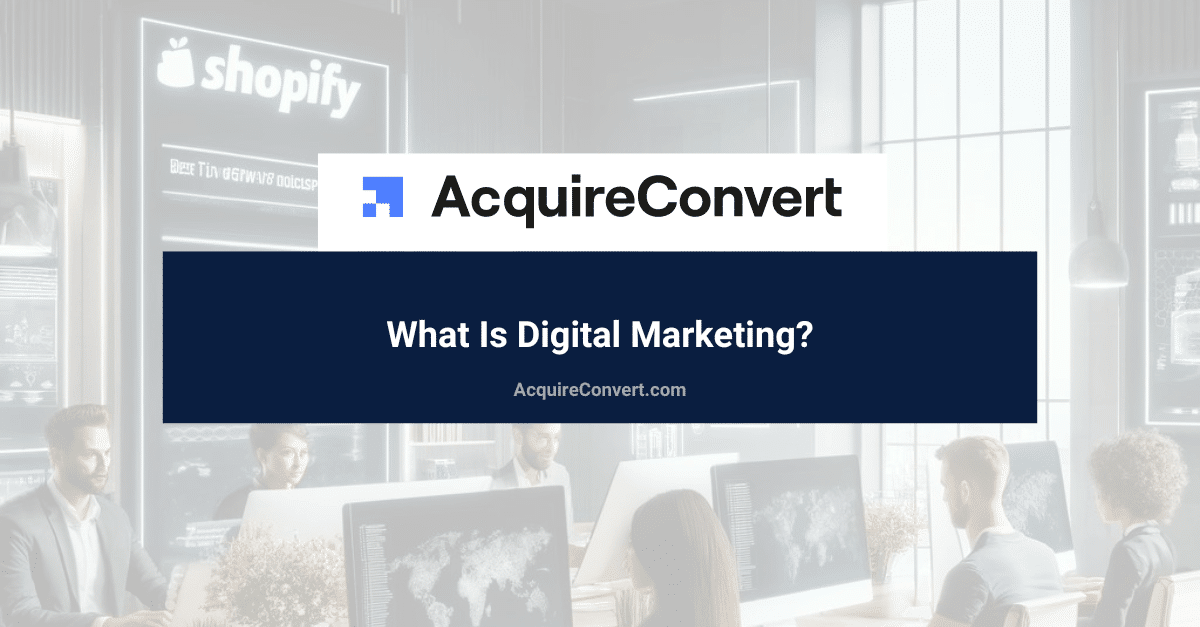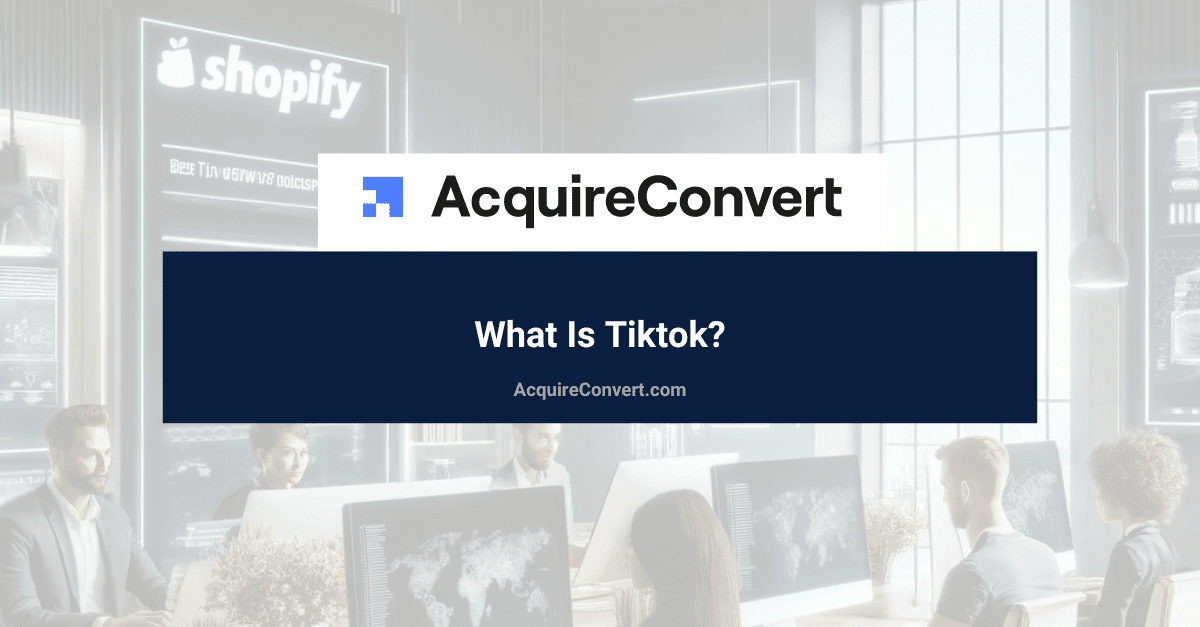What Is Digital Marketing?
Digital marketing refers to the use of digital channels to promote or market products and services to consumers and businesses. This form of marketing involves various strategies and techniques, utilizing the internet, mobile devices, social media, search engines, display advertising, and more to reach and engage with target audiences.
How Digital Marketing Works
Digital marketing works by leveraging various online channels and tactics to connect with current and prospective customers. This involves creating digital content, optimizing websites for search engines, engaging with audiences on social media, running paid advertising campaigns, and analyzing data to measure performance and improve strategies.
Types of Digital Marketing Channels
- Search Engine Optimization (SEO)
- SEO involves optimizing a website to rank higher in search engine results, driving more organic traffic.
- Content Marketing
- Content marketing focuses on creating and distributing valuable, relevant content to attract and retain a target audience.
- Social Media Marketing
- Social media marketing utilizes platforms like Facebook, Instagram, Twitter, and TikTok to promote products and engage with customers.
- Email Marketing
- Email marketing involves sending targeted messages to a group of subscribers to nurture leads and drive sales.
- Pay-Per-Click (PPC) Advertising
- PPC advertising allows marketers to place ads on search engines and other platforms, paying each time the ad is clicked.
- Affiliate Marketing
- Affiliate marketing involves partnering with affiliates to promote products and earning a commission for each sale made through their referral.
- Influencer Marketing
- Influencer marketing leverages influencers to promote products to their followers, increasing brand awareness and credibility.
- Mobile Marketing
- Mobile marketing targets users on mobile devices through SMS, apps, and mobile websites.
- Display Advertising
- Display advertising involves placing banner ads on websites, targeting specific audiences based on demographics and interests.
- Video Marketing
- Video marketing uses video content to promote products, engage audiences, and drive conversions.
- Online Public Relations (PR)
- Online PR involves managing a brand’s reputation and building relationships with the media and the public through digital channels.
- Voice Search Optimization
- Voice search optimization focuses on optimizing content for voice search queries made through devices like smart speakers.
- Native Advertising
- Native advertising blends ads into the content of the platform, providing a non-disruptive user experience.
- Marketing Automation
- Marketing automation uses software to automate repetitive marketing tasks, improving efficiency and personalization.
- Digital Out-of-Home (DOOH) Advertising
- DOOH advertising uses digital screens in public places to display ads, targeting consumers on the go.
Key Performance Indicators (KPIs) in Digital Marketing
KPIs in digital marketing include metrics such as website traffic, conversion rates, click-through rates, customer acquisition costs, and return on investment (ROI). These indicators help measure the effectiveness of digital marketing campaigns and strategies.
Digital Marketing Examples
Examples of digital marketing include search engine ads, social media posts, email newsletters, blog content, video ads, influencer partnerships, and mobile app promotions.
Importance of Digital Marketing
Digital marketing is crucial because it allows businesses to reach a larger audience, target specific demographics, engage with customers in real-time, and measure the success of their campaigns accurately. It offers cost-effective solutions compared to traditional marketing methods.
Advantages of Digital Marketing
- Global Reach: Digital marketing enables businesses to reach a global audience.
- Targeted Audience: Marketers can target specific groups based on demographics, interests, and behaviors.
- Cost-Effective: Digital marketing is often more affordable than traditional marketing.
- Measurable Results: Marketers can track and analyze the performance of their campaigns in real-time.
- Enhanced Engagement: Digital channels allow for interactive and engaging content.
How to Start Digital Marketing
To start digital marketing, businesses should:
- Define clear goals and objectives.
- Identify their target audience.
- Develop a digital marketing strategy.
- Create and optimize content for digital channels.
- Implement and track campaigns.
- Analyze data and refine strategies based on performance.
What is Marketing?
Marketing involves promoting and selling products or services, including market research and advertising. It aims to understand consumer needs and create value for them through various tactics and strategies.
What Is a Digital Marketing Agency?
A digital marketing agency provides specialized services to help businesses plan, execute, and manage digital marketing campaigns. These agencies offer expertise in SEO, content marketing, social media, PPC advertising, and more.
How Can You Become a Digital Marketer?
To become a digital marketer, one should:
- Gain foundational knowledge through courses or degrees in marketing or related fields.
- Develop skills in key areas like SEO, content creation, social media, and analytics.
- Gain practical experience through internships or entry-level positions.
- Stay updated with the latest trends and tools in digital marketing.
- Build a portfolio showcasing successful campaigns and projects.
Digital Marketing Course
Numerous online and offline courses offer comprehensive training in digital marketing. These courses cover topics like SEO, content marketing, social media, email marketing, and data analysis, equipping individuals with the skills needed for a career in digital marketing.
What Skills Are Needed in Digital Marketing?
Key skills for digital marketers include:
- SEO and SEM knowledge
- Content creation and marketing
- Data analysis and analytics
- Social media management
- Email marketing
- PPC advertising
- Marketing automation
- Strong communication and creativity
Conclusion
Digital marketing is an essential component of modern business strategy, offering numerous channels and tactics to promote products and services effectively. By understanding and leveraging these digital marketing channels, businesses can achieve significant growth and success.
FAQ
What is digital marketing in simple words? Digital marketing is the practice of promoting and selling products or services using online channels such as social media, search engines, and websites.
What are the types of digital marketing? Types of digital marketing include SEO, content marketing, social media marketing, email marketing, PPC advertising, affiliate marketing, influencer marketing, mobile marketing, display advertising, video marketing, and more.
What is an example of digital marketing? An example of digital marketing is running a social media ad campaign to promote a new product launch.
What are the 5 keys of digital marketing? The 5 key components of digital marketing are SEO, content marketing, social media marketing, email marketing, and PPC advertising.

